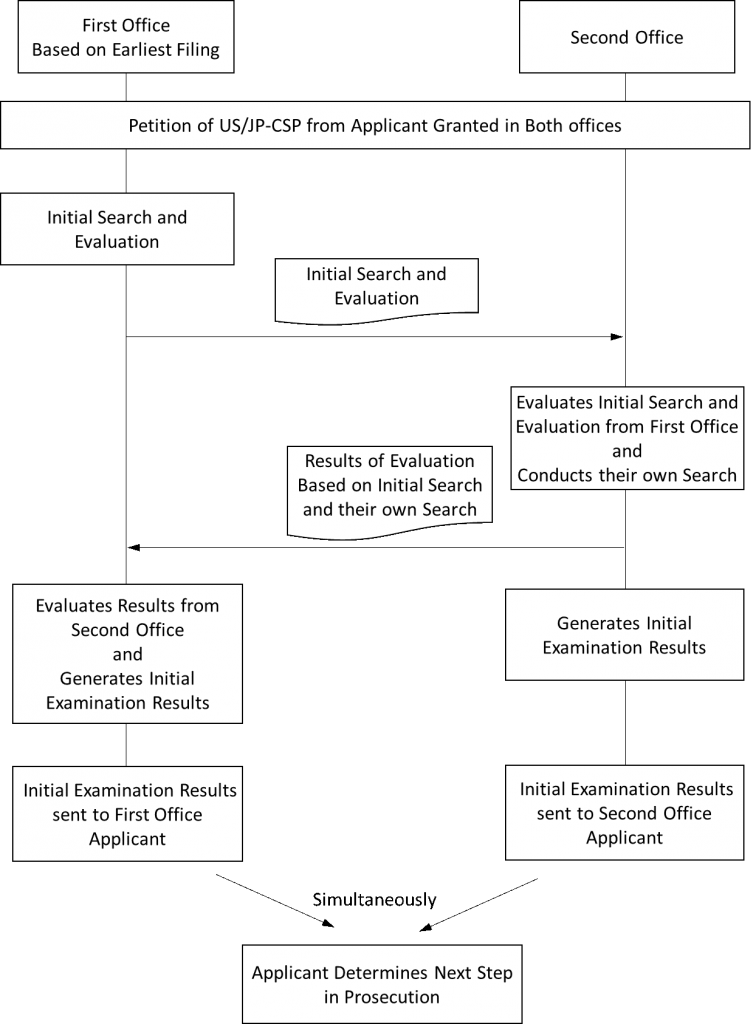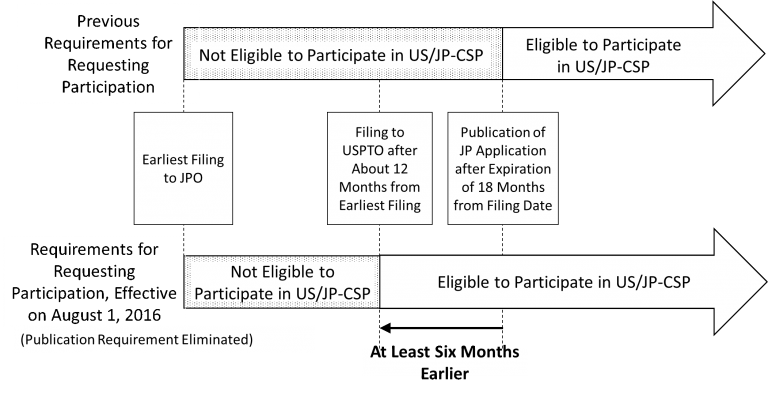US/JP Collaborative Search Pilot Program To Be More User-Friendly
Elimination of publication requirement in the Collaborative Search Pilot Program Between the Japan Patent Office and the United States Patent and Trademark Office
The Japan Patent Office (JPO) and the United States Patent and Trademark Office (USPTO) implemented a Collaborative Search Pilot Program (US/JP-CSP) on August 1, 2015, to study whether the exchange of search results between offices for corresponding counterpart applications improves patent quality, and facilitates the examination of patent applications in both offices.
Previously, in order to be eligible to participate in the US/JP-CSP, the applications must have been published. That is, applicants were not able to participate in the US/JP-CSP until 18 months had passed from the filing date of the application in the first country and the application publication.
Now, however, the JPO and USPTO have determined that publication of the applications is unnecessary for participation in the US/JP-CSP, and that unpublished applications can participate in the US/JP-CSP, effective on August 1, 2016. As a result, applicants will be able to participate in the US/JP-CSP at least six months earlier than the publication date of their applications.
About US/JP-CSP
The US/JP-CSP is a program for sharing search information of prior art and evaluation regarding patentability between the JPO and the USPTO and one of the Offices conducting own examination considering the shared search information and evaluation from the other Office (See FIG. 1).
As a result, participation in the US/JP-CSP is advantageous in that the applicant can determine a next step in the procedure efficiently based on the examination results simultaneously sent from both Offices. Furthermore, the applicant may establish strong and stable patent rights in Japan and U.S. based on the examination results considering the search information shared between both Offices.
Furthermore, the differences between a Patent Prosecution Highway Pilot Program (PPH) and the US/JP-CSP are that in the PPH, the claims in the application filed to the Later Examination Office (LEO) is required to be identical to the allowed claims in the corresponding application in the Earlier Examination Office (EEO), whereas in the US/JP-CSP, the applicant can amend the claims in the both of JP and US applications after the applicant receives the initial examination results.

Fig. 1 Examination Procedures under US/JP-CSP
Advantages of Elimination of Publication Requirement
As mentioned above, previously, publication of the application was necessary for participation in the US/JP-CSP. Effective on August 1, 2016, publication of the application is no longer a prerequisite for participation in the US/JP-CSP. As shown in FIG. 2, these modifications of the requirements permit applicants to be eligible to participate in the US/JP-CSP at least six months earlier than the publication date of their applications.

Fig. 2 The application process of the US/JP-CSP
The US/JP-CSP to be more user friendly may allow patent rights in both Japan and the U.S. to be acquired earlier and simultaneously. Therefore, if applicants wish to file the applications in both Japan and U.S., participation in the US/JP-CSP may be an effective option for the applicants who expects to promote international business development.
For more detailed information about the US-JP Collaborative Search, please see the Ministry of Economy, Trade and Industry of Japan’s website (English and Japanese).




